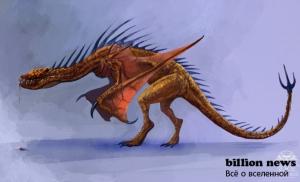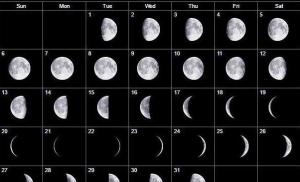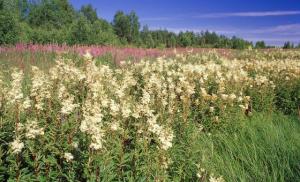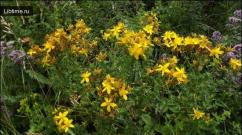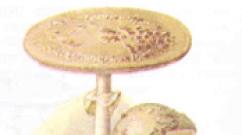Save a person who has been poisoned by deadly poisons. The pale grebe can kill with one leg
Typically, the mushroom season begins in the fall, September, October and continues further, if warm weather permits. This year, due to early spring and prolonged rains, mushrooms appeared at the end of May, beginning of June, and people went on a “quiet hunt.” There would be nothing wrong if people knew mushrooms, as they say, by sight.
Now early boletus, porcini mushroom, aspen and boletus mushrooms have appeared. They say that there are already oyster mushrooms, poplars and some other mushrooms.
Picking mushrooms is a good thing, useful in terms of relaxation and physical activity; mushroom pickers walk a lot, breathe fresh and clean air. Walking in nature is irreplaceable for health.
However, irreparable things can happen, I mean - poisoning with mushrooms and not only poisonous ones, but also edible ones, if they are collected, stored, cleaned, prepared for culinary processing incorrectly, undercooked, undercooked, and even eaten with alcohol without knowing the limits. .
More recently, in the village of Ivanovka there was a fatal mushroom poisoning. People, due to their negligence, asked a neighbor for mushrooms when they saw them already peeled and ready for cooking at his house. According to them, these were porcini mushrooms, aspen mushrooms and some others. That's the problem. Is it possible to take mushrooms from a stranger, especially “some kind” of mushrooms that you don’t know? Without any caution, the mushrooms were cooked and eaten with potatoes. Half an hour later - poisoning, the corresponding symptoms appeared, then severe intoxication. One person could not be saved.
You need to know the mushrooms and collect them yourself, only those that you have already collected before, eaten by yourself and other people. You cannot collect and eat unfamiliar mushrooms, or those mushrooms that someone talks about, or those that someone treats you with.
It is necessary to clearly distinguish edible mushrooms from poisonous ones or from conditionally edible ones. It’s clear with poisonous mushrooms, most people somehow know them and don’t take them. But with conditionally edible mushrooms - the question! Temptation often prevails over common sense. People take them, hope to boil them, changing the water several times, then fry them, and everything will be fine. This is a mistake. Such mushrooms can cause poisoning and even death.
Very often you can see mushroom pickers picking mushrooms in plantings near roads or along the edge of a field, where pesticides or herbicides might have been used. These people create problems for themselves, their family and friends.
Even edible mushrooms, when saturated with toxic exhaust from cars, pesticides and herbicides, become dangerous to health and life, they become poisonous.
Unfortunately, not all people listen to the advice and recommendations of doctors.
It is also typical that mushrooms are given to children as food, probably not knowing that mushrooms in any form of preparation, even the most edible ones, are not beneficial for a child. Children do not yet have that enzymatic system that would digest mushrooms, and they do not have that powerful immune system of the body that would protect it in the worst case.
Today, many different mushrooms have appeared in markets and stores. In organized retail outlets (shops) you can trace the entire “mushroom history”, that is, where they are grown, where they are obtained, how they are stored and how they are sold. The stores know where the mushrooms came from, there is documentation - quality certificates, invoices, etc. This is where you need to buy them.
But in markets, and, especially, somewhere, on trays on the streets, on the side of roads and in other places, it is impossible to trace the quality of mushrooms. Accordingly, you cannot buy mushrooms in these places. Even if they are “golden” - don’t take them!
To avoid mushroom poisoning, the sale of wild mushrooms in trade and markets is prohibited in the region.
I would like to tell mushroom pickers once again not to take risks, not to put themselves and their loved ones at risk, especially not to endanger the lives of children. It is difficult to save an adult from mushroom poisoning, and even more difficult for a child.
Well, if you feel that you feel sick from eating mushrooms, you should immediately rinse your stomach yourself, take a laxative, perform other procedures, and then call an ambulance. Be sure to first say what mushrooms you ate and what kind, name the time of their consumption, which is very important for providing medical care; there should be no delay here. Doctors will help, but only if they contact you in a timely manner.
You have 90 minutes to complete the tasks.
Task 1.The task includes 24 questions, each of them has 4 possible answers. For each question, select only one Answer that you consider the most complete and correct. Place a “+” sign next to the index of the selected answer. In case of correction, the “+” sign must be duplicated.
1 . Bacteria curved in the shape of a comma are called:
a) cocci;
b) vibrios;
c) spirilla;
d) bacilli.
2. Yeast, developing without oxygen on sugary media, causes fermentation:
a) lactic acid;
b) butyric acid;
c) alcohol;
d) acetic acid.
3. Mycelium of the fungus of the genus Penicillium:
a) non-cellular structure;
b) unicellular, mononuclear;
c) unicellular multinucleate;
d) multicellular.
4. It is difficult to save a person who has been poisoned by deadly poisonous mushrooms, since the toxins of these mushrooms:
a) very poisonous;
b) different actions and there are a lot of them;
c) the toxins of these mushrooms are quickly absorbed into the blood;
d) cause symptoms of poisoning after 12 - 20 hours, when their effect is irreversible.
5. The figure shows the structure of a cap mushroom. Designation 2 corresponds to:
a) a hat;
b) mycorrhiza;
c) mycelium;
d) leg.
6. Algae has adapted to terrestrial life:
a) chlamydomonas;
b) chlorella;
c) pleurococcus;
d) nitella.
7. Mosses reproduce:
a) only seeds;
b) only by disputes;
c) spores and vegetatively;
d) only vegetatively.
8. When a radish seed germinates, the following appears first:
a) main root;
b) lateral roots;
c) main and lateral roots;
d) adventitious roots.
9. The plant (strawberry) shown in the figure belongs to the family:
a) Rosaceae;
b) Lamiaceae;
c) Liliaceae;
d) Solanaceae.
10. Pollination in Scots pine is carried out:
a) insects;
b) water;
c) by the wind;
d) animals.
11. Cruciferous flower formula:
a) H 4 L 4 T 6 P (2)
b)*H 4 L 4 T 4 P (2) ;
c) *H 2+2 L 4 T 2+4 P (2) ;
d) *H 4 L 4 T 8 P (2).
12. Cell membranemissing from:
a) rhizomes;
b) flagellates;
c) ciliates;
d) all protozoa.
13. The main host of falciparum plasmodium:
a) person;
b) larva of malaria mosquito;
c) malaria mosquito;
14. Dysentery infection occurs:
a) through the bite of an insect that carries the disease;
b) when eating poorly cooked meat from a sick animal;
c) by airborne droplets;
d) when swallowing cysts of dysenteric amoeba with food or water.
15. In terms of lifestyle and feeding habits, coelenterates are aquatic:
a) autotrophs;
b) omnivores;
c) filters;
d) predators.
16. The main part of the mesoderm of flatworms is:
a) skin;
b) muscles;
c) nervous system;
d) parenchyma,
17. Circulatory system of annelids:
a) open;
b) closed, the spinal vessel pulsates;
c) closed, the abdominal vessel pulsates;
d) closed, ring vessels pulsate in the anterior part of the body.
18. The girdle on the body of an earthworm takes part in:
a) movement;
b) mating;
c) nutrition;
d) regeneration.
19. The mantle of mollusks is called:
A) outer part of the sink;
b) a fold of skin covering the body;
c) part of the reproductive organ system;
d) part of the digestive system.
20. The four-branched cephalopods are:
a) cuttlefish;
b) octopuses;
c) squid;
d) nautiluses.
21. Of the listed arthropods, abdominal limbs are developed in:
a) crustaceans;
b) arachnids;
c) insects;
d) centipedes.
22. The spider's venom glands are located:
a) at the base of the chelicerae;
b) at the base of the legs;
c) in the front of the abdomen;
d) in the back of the abdomen.
23. Of the named insects, the limbs of the burrowing type are:
a) housefly;
b) bed bug;
c) mole cricket;
d) red ant.
24. Worker bees are:
a) females who have laid eggs and begun caring for their offspring;
b) females whose gonads are not developed;
c) young females capable of laying eggs in a year;
d) males developing from unfertilized eggs.
Task 2.The task includes 6 questions, with several answer options (from 0 to 5). Place "+" signs next to the indices of the selected answers. In case of corrections, the “+” sign must be duplicated.
1. Split-petalled corolla:
a) violets;
b) cloves;
c) fragrant tobacco;
d) tulip;
d) lily of the valley.
2. Protozoa (Protozoa) can move with the help of:
a) pseudopodium;
b) flagella;
c) eyelashes;
d) tentacles;
e) parapodium.
3. The characteristic features of coelenterates include:
a) radial symmetry;
b) three-layer;
c) the presence of a gastric cavity;
d) ganglinous type of nervous system;
d) predatory lifestyle.
4. The development of the circulatory system of arachnids depends on:
a) body size;
b) development and structure of the respiratory system;
c) heart size;
d) heart shapes;
d) blood volume.
5. Representatives of the type of mollusks, according to the method of reproduction, can:
a) be dioecious;
b) be hermaphrodites;
c) be parthenogenetic females;
d) change your gender throughout your life;
e) reproduce asexually (by tearing off body parts).
6. The housefly's legs contain the following sensory organs:
a) vision;
b) sense of smell;
c) touch;
d) taste;
d) hearing.
Task 3.A task to determine the correctness of judgments. Place a "+" sign next to the numbers of correct judgments. (7 judgments).
1. During the dormant period, the vital processes of the seeds stop.
2. All ferns need water for fertilization.
3. Bryophytes are a dead-end branch of evolution.
4. All flagellates are characterized by the presence of a green pigment - chlorophyll.
5. In protozoa, each cell is an independent organism.
6. The honey bee's vision is the same color and three-dimensional as that of mammals.
7. Scarab beetles, which feed on dung, have long intestines.
Task 4.Choose the appropriate term for this definition.
1. The arrangement of leaves in the crown of a bush or tree relative to each other, due to the characteristics of illumination - ________________________________.
2. The larva of lepidopteran insects is ___________________________.
3. A modified ovipositor in some insects, performing the functions of defense and attack - ___________________________.
4. The anterior end of the tapeworm’s body, which bears the organs of attachment to the host’s intestines -________________________.
8th grade [ max60 points]
Task 1 [max24 points, 1 point for each correct answer]:
1-6, 2-v, 3-d, 4-d, 5-d, 6-v, 7-v, 8-a, 9-a, 10-v, 11-v, 12-a, 13- in, 14th, 15-g, 16-g, 17-g, 18-b, 19-b, 20-g,
21-a, 22-a; 23-v, 24-6.
Task 2 [mah 14 points, each mistake minus 1 point]:
1 - a, 6; 2 - a, b, c; 3 - a, c, d; 4 - a, b; 5 - a, b; 6 - in, g.
Task 3 [max8 points, each error minus 2 points]:
Correct judgments are 2, 3, 5, 7.
Task 4 [max4 points, 1 point for each correct answer]:
1 - sheet mosaic; 2 - caterpillar; 3 - sting; 4 - scolex
A. N. Rudnev, Municipal Educational Institution Secondary School, Krasnaya Kudryavka village, Saratov region.
Mushroom poisoning occurs not only when eating inedible mushrooms, but also edible ones if they are improperly processed and preserved. Mushroom poisoning is quite common and sometimes ends in death, since the mushroom toxin is poisonous.
For example, morels and strings contain poisonous helwellic acid, which can cause hemolysis (dissolution of red blood cells) and damage the liver, heart, kidneys and spleen. The lines, in addition to gelwellic acid, also contain a whole group of very dangerous toxic substances, for example gyrometrin, which, in addition to the ability to cause damage to the liver and other vital organs, also has a toxic effect on the nervous system and disrupts metabolic processes in the body, including in cells brain.
Typically, the effect of the poison does not begin to appear immediately, but after 6-10 hours. The disease develops gradually. First, a feeling of fullness and constriction appears in the stomach, which over time acquires the character of pain and stinging, nausea occurs, turning into uncontrollable vomiting. Sometimes there is diarrhea, a rapidly growing feeling of weakness and weakness. Very often there is a sharp headache, confusion, delirium, convulsions, and jaundice is often observed.
Children, young people, pregnant women and the elderly are especially sensitive to the effects of helwellic acid and gyrometrin.
It has been experimentally established that helvelic acid is extracted from mushrooms when boiled. Unlike helvelic acid, gyrometrin dissolves in hot water and is also not affected by heat treatment. But during prolonged drying, gyrometrin and other substances of this group contained in the lines are still destroyed during prolonged drying.
Thus, proper processing of mushrooms can eliminate the possibility of poisoning.
Pale grebe
– the most poisonous mushroom of all found in Russia.

Amanitotoxin plays the main role in the mechanism of poisoning by toadstool. This substance is completely insoluble in water, retains its toxicity even after 20 minutes of boiling, and is not destroyed by enzymes of the gastrointestinal tract.
The venom of the toadstool affects the liver, cells of the central nervous system, blood vessels, glandular tissue and the walls of the digestive tract. Along with this, the poison also causes disruption of many biochemical processes in the body.
Once in the body, the poison does not make itself known immediately, but many hours after dinner or lunch. Meanwhile, the poison does its job, and when signs of poisoning appear, it is already difficult to save the person: the fungal toxin that has penetrated the blood can only be removed from the body with the help of hemodialysis. Therefore, early hospitalization in a qualified medical institution can save a person poisoned by toadstool, even when the fungal toxin is in the blood.
fly agaric
The chemical composition of fly agaric and the mechanism of its action on human organs are now well studied. The main poisonous element of fly agarics is the alkaloid muscarine - a strong poison, 3-5 mg of which kills a person (this amount of poison is contained in 3-4 fly agarics).

Cases of death are very rare and occur only when eating large quantities of these mushrooms. Recovery occurs relatively quickly: after 1-3 days. However, sometimes, due to some reasons, this period can be delayed up to 11 days.
False mushrooms
and, skillfully masquerading as the real ones, they still end up in the baskets of inexperienced mushroom pickers, sometimes causing severe poisoning.
False honey mushrooms are not very poisonous. When poisoning with these mushrooms, gastrointestinal disorders occur. These phenomena are associated with the action of the “milk” juice of honey mushrooms, which has pronounced irritating properties and causes gastroenteritis (inflammation of the gastrointestinal tract), accompanied by nausea, vomiting, abdominal pain, and diarrhea.
Memory
Memory has been attracting the attention of a wide range of theoretical and practical researchers for many decades. The study of this phenomenon is equally important for biological...
Despite the fact that everyone is aware of how dangerous it can be to eat them, hundreds and thousands of people are admitted to hospitals every year with a diagnosis of mushroom poisoning. The desire to profit from dishes made from raw materials collected by oneself overcomes the instinct of self-preservation and at times leads to sad consequences.
What mushrooms can cause poisoning?
Many people love mushrooms. But sometimes this love has very dangerous consequences in the form of severe poisoning. People mistakenly believe that poisoning can only be caused by poisonous mushrooms. But in fact, edible fruits can also pose a danger. The fact is that the legs and caps create an environment favorable for the life and proliferation of bacteria. Heat treatment kills pathogenic microorganisms. But if prepared incorrectly - if the pickles are stored for too long, or are soaked in an insufficiently salted marinade, for example - poisoning from pickled mushrooms is possible.
Is it possible to get poisoned? Yes, such cases also occur, although these fruits are considered the most harmless. The fact is that even edible ones absorb toxins like a sponge. Therefore, they can become poisonous if stored inappropriately. This applies to raw, dried, and pickled mushrooms. Therefore, before cooking, it is better to study all the basic rules of processing and storage as carefully as possible.
How to distinguish poisonous mushrooms from edible ones?

The easiest way to protect yourself and prevent mushroom poisoning is to know which fruits are poisonous and which are not. There are a lot of nuances and it’s impossible to remember everything at once. But after a few trainings, you will be able to identify “good” and “bad” at a glance.
Here's how to distinguish poisonous mushrooms from edible ones and vice versa:
- Most edible mushrooms are tubular.
- Potentially dangerous fruits have an unpleasant greenish color. You should also be wary at the sight of a pinkish cap. These are mainly found in false mushrooms. To check, break it apart. If the mushroom is truly false, the scrap will turn red. You should not trust too bright colors. In most cases, noticeable caps are a red flag.
- You can’t rely on smell alone, but experienced mushroom pickers say that poisonous prey either smells unpleasant or doesn’t smell at all.
- If you want to prevent porcini mushroom poisoning, put them all in a pan with water and throw the onion into it. If the latter turns blue, bad news: the crop will have to be thrown away.
- Inexperienced mushroom pickers avoid wormy fruits. But in fact, insects and animals almost always only covet edible mushrooms. There are exceptions, but they are rare.
Types of poisonous mushrooms
Knowing the main types of danger will also help prevent mushroom poisoning. There are a lot of them - it is believed that out of more than 3,000 species of mushrooms, only about 400 are edible - but you don’t need to remember everything. It is important to know only those that are mainly found in local latitudes. Among them are the following examples:

Symptoms of mushroom poisoning
This is a very dangerous product that can cause damage even after heat or any other treatment. Therefore, if suddenly signs of mushroom poisoning appear shortly after consuming this product, you urgently need to pay attention to them. It is better to let your fears not be confirmed than to have to face the unpleasant consequences of intoxication.
Mushroom poisoning, how long does it take for symptoms to appear?
As a rule, the first signs of mushroom poisoning begin to appear 1.5 - 2 hours after eating them. But sometimes the reaction occurs within a day or even two. The time it takes for mushroom poisoning to manifest depends on various factors. The speed of the reaction is affected by the number of fruits eaten and their type, weight, age and health status of the victim. Even the strongest immune system cannot cope with the effects of toxins on its own. Therefore, sooner or later, signs of intoxication will appear.
The first signs of mushroom poisoning

It is almost impossible not to pay attention to them. Here's how mushroom poisoning manifests itself:
- nausea;
- severe vomiting;
- diarrhea up to 15 times per day;
- stomach ache;
- temperature rise to 38-39 degrees;
- the upper and lower extremities become cold;
- inflammation of the stomach and intestines;
- weakening of the pulse;
- the appearance of delusions and hallucinations;
- noticeable mental disorder;
- anuria;
- increased sweating and salivation;
- breathing problems;
- drowsiness and weakness;
Poisoning with pickled mushrooms and botulism manifest themselves similarly, but with minor nuances. Main symptoms:
- nausea with vomiting;
- diarrhea;
- severe headaches;
- blurred vision (the eyes begin to double, everything floats);
- the oral mucosa dries out;
- convulsions appear;
- breathing becomes difficult.
What to do if you are poisoned by mushrooms?
Self-medication for intoxication is strictly prohibited. Therefore, when poisoning with poisonous mushrooms occurs, the first and most important thing to do is to call specialists or try to independently deliver the victim to the emergency room of the nearest medical center. If it is possible to save samples of the product, do so. This way, specialists will be able to find out what poison caused the poisoning and will more quickly select the appropriate effective treatment.
First aid for mushroom poisoning
The main thing to remember is that the victim cannot be harmed. There is no need to urgently bury yourself on the Internet in search of practical advice. The main emergency treatment for mushroom poisoning is gastric lavage. This is necessary to remove remaining toxins from the body. First aid for poisoning with poisonous mushrooms involves drinking plenty of fluids. The patient can be given tea, water or a weak solution of potassium permanganate, and then induce vomiting by pressing on the root of the tongue. The procedure must be continued until no more food comes out of the stomach.
Mushroom poisoning - what to do at home?
In addition to drinking plenty of fluids, victims can be given laxatives and activated carbon tablets. If mushroom poisoning occurs, treatment at home involves the most effective cleansing of the stomach and intestines. That's why coal is the best help. This is an effective sorbent. It should be taken 1 piece per kilogram of body weight. But if the patient develops symptoms - low blood pressure, loss of consciousness, convulsions - the methods described above can be harmful.
Mushroom poisoning - treatment in hospital

The first thing they do in the hospital is insert a probe and use it. Often, if the problem is mushroom poisoning, treatment involves taking a saline laxative, intravenous medication, and accelerated diuresis. On the first day, hemosorption is carried out and toxins are removed from the blood. If there are hallucinations, the patient is given the antidote Atropine.
Mushroom poisoning - consequences
The most dangerous poisoning is toadstools. It ends in death in 50-90% of cases. If the patient eats up to 3 fruits, death occurs in 100% of cases. When consuming other types, the consequences of mushroom poisoning may be less critical. When treatment begins on time, the person recovers completely. If help was not provided, then within 5-8 days death occurs with a 50% probability.
Prevention of mushroom poisoning
The easiest way is to buy mushrooms in trusted places. But if the passion for picking fruits cannot be overcome, here are some tips on how to avoid poisoning from mushrooms:
- Do not pick unfamiliar fruits.
- Try to avoid old mushrooms.
- When cooking, do not forget to carefully process and boil the caps with stems. Pour out the first few decoctions.
- Mushrooms should be cleaned and cooked immediately after picking.
- There is no need to collect anything near roads and industrial zones.
- Do not collect mushrooms in plastic bags. It is best to use baskets.
- If your canned mushrooms have a bulging lid, it is safest to throw them away.
Assignments for the school stage of the All-Russian Biology Olympiad for schoolchildren in the 2012 academic year in 9th grade.
You have 90 minutes to complete the tasks.
Task 1. The task includes 30 questions, each of them has 4 possible answers. For each question, select only one Answer that you consider the most complete and correct. Place a “+” sign next to the index of the selected answer. In case of correction, the “+” sign must be duplicated.
1. Yeast, developing without access to oxygen on sugary media, causes fermentation:
a) lactic acid;
b) butyric acid;
c) alcohol;
d) acetic acid.
2.Mycelium of the fungus of the genus Penicillium:
a) non-cellular structure;
b) unicellular, mononuclear;
c) unicellular multinucleate;
d) multicellular.
3. It is difficult to save a person who has been poisoned by deadly poisonous mushrooms, since the toxins of these mushrooms:
a) very poisonous;
b) different actions and there are a lot of them;
c) the toxins of these mushrooms are quickly absorbed into the blood;
d) cause symptoms of poisoning after 12 - 20 hours, when their effect is irreversible.
4.Algae has adapted to terrestrial life:
a) chlamydomonas;
b) chlorella;
c) pleurococcus;
d) nitella.
5. The plant shown in the figure belongs to the family:
a) Rosaceae;
b) Lamiaceae;
c) Liliaceae;
d) Solanaceae.
6.Cruciferous flower formula:
a) Ch4L4T6P (2)
b)*Ch4L4T4P(2);
c) *H2+2L4T2+4P(2);
d) *Ch4L4T8P(2).
7. The cell membrane is absent in:
a) rhizomes;
b) flagellates;
c) ciliates;
d) all protozoa.
8.The main host of falciparum plasmodium:
a) person;
b) larva of malaria mosquito;
c) malaria mosquito;
9. Infection with dysentery occurs:
a) through the bite of an insect that carries the disease;
b) when eating poorly cooked meat from a sick animal;
c) by airborne droplets;
d) when swallowing cysts of dysenteric amoeba with food or water.
10. In coelenterates, jellyfish and polyp are:
a) various stages of asexual reproduction;
b) larva and adult animals, respectively;
c) manifestation of alternation of generations;
d) various species of coelenterates.
11.According to their lifestyle and feeding habits, coelenterates are aquatic:
a) autotrophs;
b) omnivores;
c) filters;
d) predators.
12.Circulatory system of annelids:
a) open;
b) closed, the spinal vessel pulsates;
c) closed, the abdominal vessel pulsates;
d) closed, ring vessels pulsate in the anterior part of the body.
13.An earthworm has blood:
a) does not contain special pigments;
b) contains free hemoglobin;
c) contains red blood cells with hemoglobin;
d) absent, because breathing is carried out over the entire surface of the body.
14. The mantle of mollusks is called:
a) the outer part of the shell;
b) a fold of skin covering the body;
c) part of the reproductive organ system;
d) part of the digestive system.
15. Four-branched cephalopods are:
a) cuttlefish;
b) octopuses;
c) squid;
d) nautiluses.
16. Of the listed arthropods, abdominal limbs are developed in:
a) crustaceans;
b) arachnids;
c) insects;
d) centipedes.
17. Late blight - a disease of tomatoes and potatoes, which manifests itself in darkening of leaves and fruits, causes:
a) bacteria;
b) virus;
c) mushroom;
d) lichen.
18. Of the listed spiders, the following are poisonous to humans:
a) cross spider;
b) silver spider;
c) karakurt;
d) house spider.
19.The spider’s poisonous glands are located:
a) at the base of the chelicerae;
b) at the base of the legs;
c) in the front of the abdomen;
d) in the back of the abdomen.
20. Of the named insects, limbs of the burrowing type have:
a) housefly;
b) bed bug;
c) mole cricket;
d) red ant.
21. Of the named insects, the oral apparatus of the gnawing type has:
a) dragonfly;
b) blowfly;
c) bell mosquito;
d) swimming beetle.
22.Worker bees are:
a) females who have laid eggs and begun caring for their offspring;
b) females whose gonads are not developed;
c) young females capable of laying eggs in a year;
d) males developing from unfertilized eggs.
23. Lancelets live:
a) only in warm seas;
b) only in warm fresh water bodies;
c) in cold seas of high salinity;
d) in swamps and shallows of fresh water bodies.
24. The endosperm of an angiosperm may contain:
a) 14 chromosomes;
b) 24 chromosomes;
c) 34 chromosomes;
d) 44 chromosomes.
25. The hearing organ of fish is represented by:
a) lateral line organ;
b) external ear;
c) middle ear;
d) inner ear.
26. Snakes have eyelids:
a) free, transparent;
b) free, opaque, mobile;
c) fused, transparent;
d) fused, only the upper eyelid is transparent.
27. From the ventricle of the heart of reptiles comes:
a) only one aortic arch;
b) only two aortic arches;
c) one aortic arch and pulmonary artery;
d) two aortic arches and the pulmonary artery
28. Unlike bony fish, cartilaginous fish lack:
a) scales;
b) liver;
c) intestines;
d) swim bladder.
29.The body temperature of a newt depends on:
a) the nature of the food;
d) ambient temperature.
30. The most important factor in the regulation of such seasonal migration of birds as migration is:
a) change in average daily ambient temperature;
b) reduction in the abundance of food supply;
c) change in the length of daylight hours;
d) formation of a married couple.
Task 2. The task includes 10 questions, with several answer options (from 0 to 5). Place "+" signs next to the indices of the selected answers. In case of corrections, the “+” sign must be duplicated.
1. The figure shows options for the position of the ovary in a flower. The inferior ovary is presented under the numbers:
a)1;
b)2;
c)3;
d)4;
e)5.
2.Elementary inflorescence of a spikelet in a panicle:
a) wheat;
b) barley;
c) rice;
d) oats;
d) reeds.
3.Protozoa can move using:
a) pseudopodium;
b) flagella;
c) eyelashes;
d) tentacles;
e) parapodium.
4. The characteristic features of coelenterates include:
a) radial symmetry;
b) three-layer;
c) the presence of a gastric cavity;
d) ganglinous type of nervous system;
d) predatory lifestyle.
5. Bivalve mollusks that live in fresh water bodies include:
a) pearl barley;
b) pond snails;
c) balls;
d) scallops;
d) toothless.
6.The development of the circulatory system of arachnids depends on:
a) body size;
b) development and structure of the respiratory system;
c) heart size;
d) heart shapes;
d) blood volume.
7.The housefly has sensory organs on its legs:
a) vision;
b) sense of smell;
c) touch;
d) taste;
d) hearing.
8. They have a four-chambered heart:
a) lizards;
b) turtles;
c) crocodiles;
d) birds;
e) mammals.
9. The cerebellum is well developed in:
a) fish and amphibians;
b) fish and birds;
c) amphibians and reptiles;
d) reptiles and mammals;
e) birds and mammals.
10. There are always no fangs in the dental system in:
a) rodents;
b) proboscis;
c) artiodactyls;
d) lagomorphs;
e) equids.
Task 3. Task to determine the correctness of judgments. Place a "+" sign next to the numbers of correct judgments. (10 judgments).
1. Polysaccharides predominate in the main substance of the plant cytoplasm.
2. All flagellates are characterized by the presence of a green pigment - chlorophyll.
3. In protozoa, each cell is an independent organism.
4. The honey bee's vision is the same color and volume as that of mammals.
5. All sturgeon fish are characterized by spawning migrations.
6. The disappearance of the tail in frog tadpoles occurs due to the fact that dying cells are digested by lysosomes.
7. Lateral line organs are present in all chordates that constantly live in water.
8. Some modern birds have free fingers on their wings with spears for climbing trees.
9.Epithelial tissues are divided into two groups: integumentary and glandular.
10. A person who receives part of the blood for transfusion, other tissues or an organ for transplantation is a recipient.
Task 4. Choose the appropriate term for this definition.
The larva of lepidopteran insects is ___________________________.
The anterior end of the tapeworm’s body, which bears the organs of attachment to the host’s intestine, is _____________________________.
3. The anterior end of the tapeworm’s body, which bears the organs of attachment to the host’s intestines -________________________.
9th grade
Task 1:
1-c, 2-d, 3-d, 4-c, 5-a, 6-c, 7-a, 8-c, 9-d, 10-c, 11-d, 12-d, 13- 6, 14-6, 15-g, 16-a, 17-c, 18-c; 19-a; 20-in;
21-g; 22-b, 23-a, 24-6, 25-g, 26-c, 27-g, 28-g, 29-g, 30-c.
Task 2:
1 - b, c;2 - c, d, d;3 - a, b, c;4 - a, c, d;5 - a, c, d;6 - a, b;7 - c, d; 8 - c, d, d;9 - b, d;10 - a, 6, d.
Task 3:
Correct judgments are 1, 3, 6, 8, 10.
Task 4)
